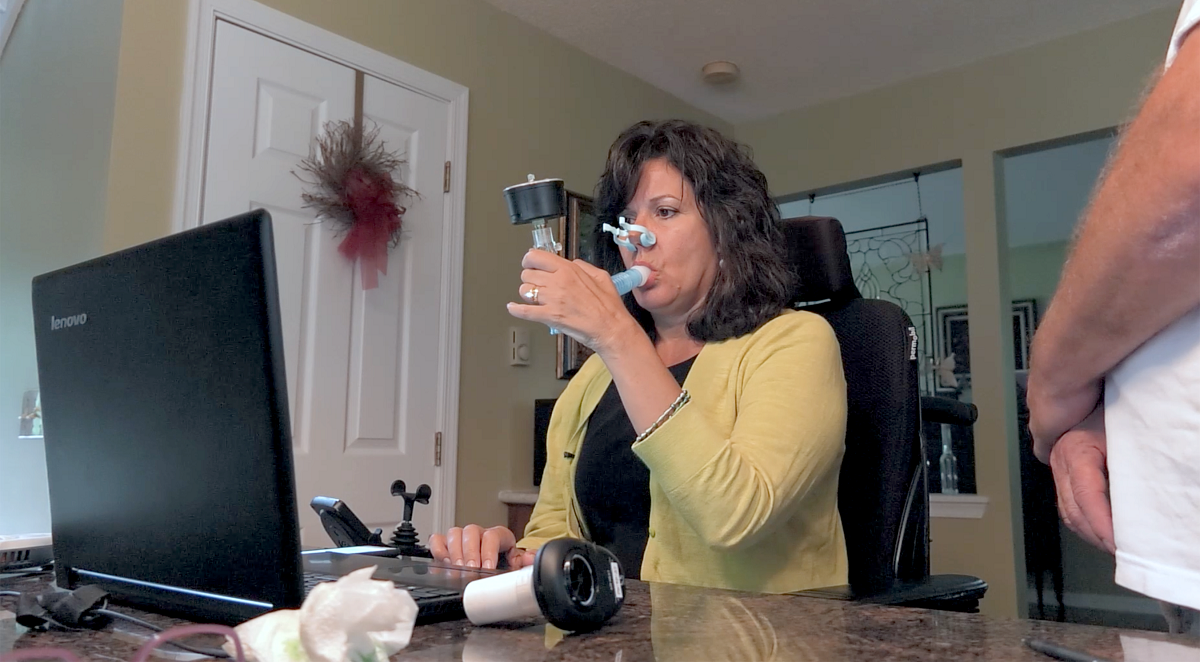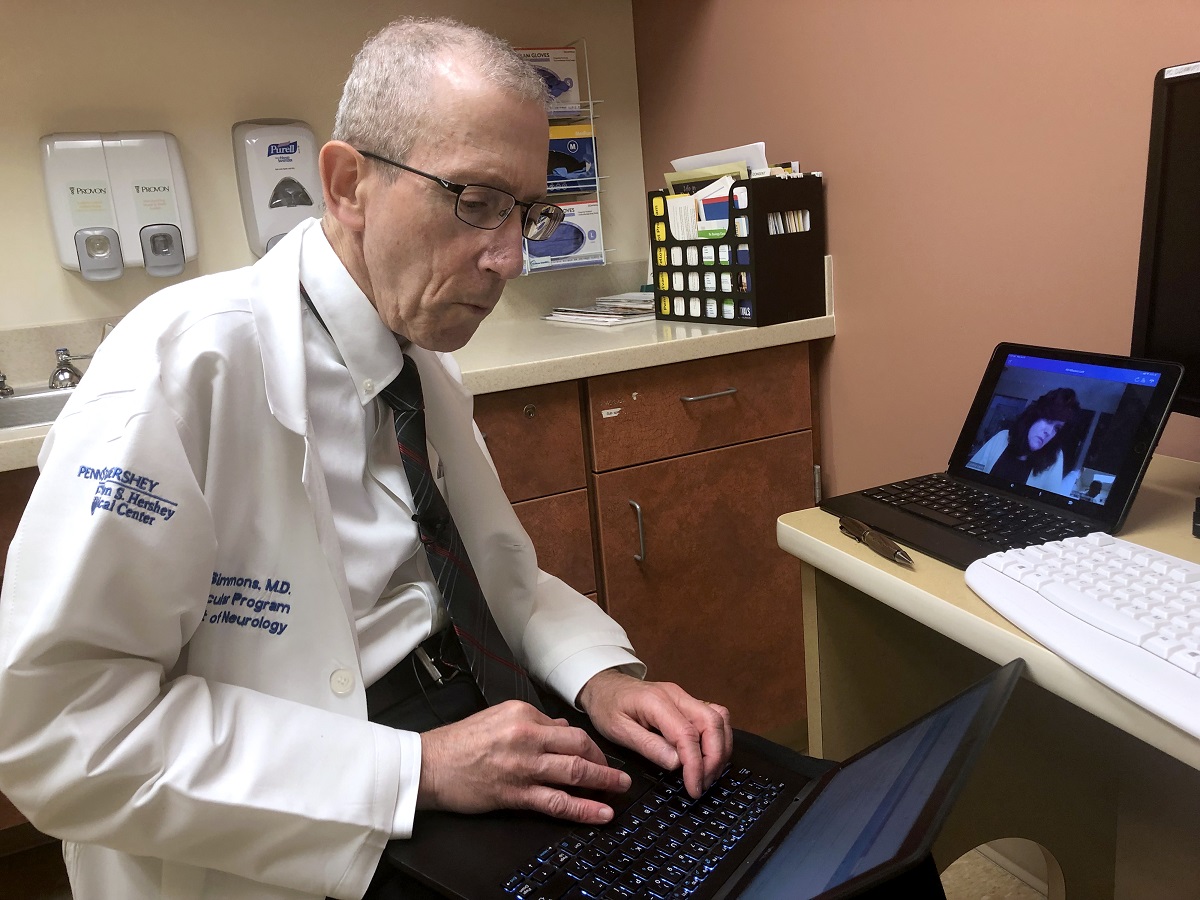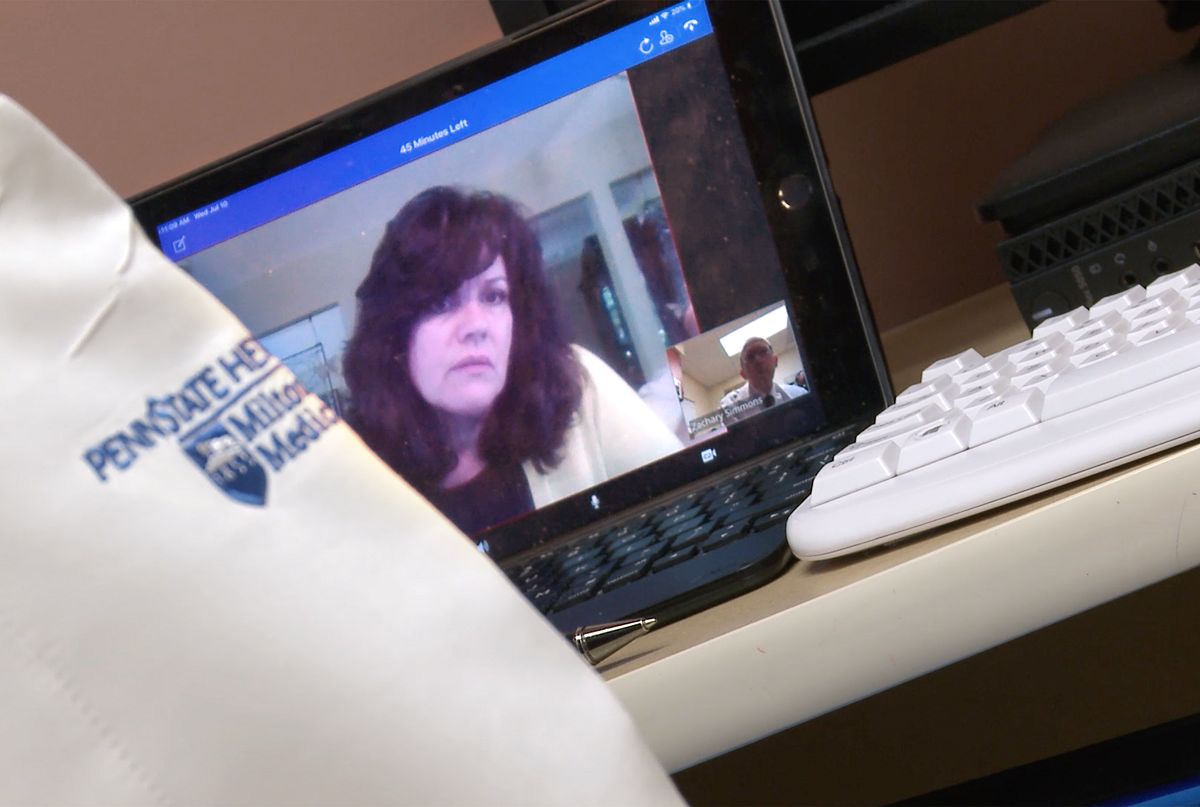Penn State Health OnDemand suddenly in demand for distance care

By Carolyn Kimmel
In these unprecedented days of “social distancing,” telehealth technology, including Penn State Health OnDemand, is bridging the physical gap between patients and providers who need to stay connected and safe.
“We’re in a situation where patients and providers are at home, and they need to connect now. Penn State TeleHealth, through Penn State Health OnDemand, empowers them to do that,” said Dr. Chris DeFlitch, Penn State Health vice president and chief medical information officer. “Our mentality has always been, ‘How can we help our community?’ We can help through telehealth services now more than ever.”
Penn State TeleHealth has provided services for Pennsylvania for TeleStroke and Tele-ICU for years, expanded by the launch of Penn State Health OnDemand for virtual urgent care last year, he said.
In recent weeks, however, the opportunity to use telehealth for much more has soared.
Responding to the expected surge of patients needing COVID-19 testing, the Penn State TeleHealth team sprang into action to set up free, virtual coronavirus screening through its Penn State Health OnDemand platform.
Patients can stay at home and be evaluated through services provided by more than 100 Penn State Health providers, said Christopher LaCoe, vice president of operations at Penn State Health Milton S. Hershey Medical Center and executive sponsor of telehealth programs.
Available around the clock, the coronavirus screening allows patients to report symptoms and, if warranted, routes patients to a Penn State Health drive-through COVID-19 testing site or to a care location.

Dr. Zachary Simmons, director of the Penn State ALS Clinic, documents his findings of Lacey’s symptoms.
“People appreciate being able to stay at home in a protected place and have the provider ask the right questions,” DeFlitch said. “It’s safer for patients and providers.”
In the first two weeks alone, more than 2,000 patients were screened.
As stay-at-home orders expand across the U.S., it makes sense to convert other in-person health care to telehealth, DeFlitch said. Last week, many telehealth visits took place across eight Penn State Health primary care sites for the first time, and more than 3,000 accounts have been established across the health system’s outpatient locations and hospitals to enable telehealth capability, according to LaCoe.
In another first-time use, Tele-ICU equipment is being used to connect patients with family at home who can no longer visit due to COVID-19 restrictions and to allow family to see and speak with doctors on their rounds to patient rooms.
“COVID-19 has been the crisis to create the burning platform for all this,” LaCoe said. “Where there may have been some reluctance among providers to jump onboard before, there is great enthusiasm now.”
While this time in health care history will be remembered for many things, among them likely will be telehealth’s coming of age as an effective, efficient and accepted practice.
“The needs of patients and providers have changed because of COVID, and I think this will allow us to think differently about what really requires in-person interaction and what can be done remotely going forward,” DeFlitch said.
Some patients may always value in-person connection, and others will find telehealth acceptable and even preferable, he predicted. It’s still unknown what types of care will appropriately fit into the telehealth model, and criteria will continue to be refined as it evolves, he said.
But after the urgent need for social distancing has passed, the benefits of telehealth – saving patients miles, time and energy – will last, LaCoe said.

Lacey opts for telehealth visits because they save her a grueling day of travel.
If you're having trouble accessing this content, or would like it in another format, please email Penn State Health Marketing & Communications.
